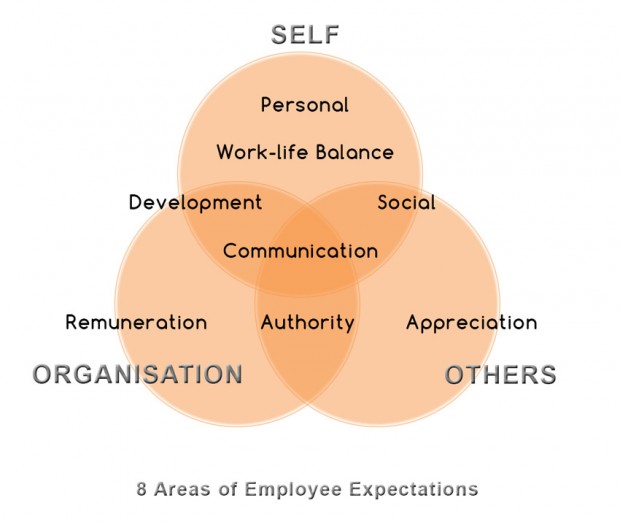Next Monday is Blue Monday. Are you ready?
Understanding Employee Expectations: the key to effective engagement and retention
Every year January is the month when job boards and recruitment agencies launch their “New Year, New Job” campaigns – why?
January is the busiest month for starters and leavers with the third Monday of January in particular known as Blue Monday, the one day when more employees hand in their letter of resignation than any other day in the year.
Two trends indicate 2016 will continue to be a busy year for UK recruiters:
- UK labour market statistics from the CBI show the employment rate is the highest since records began in 1971 (at 73.7%) with increasing business optimism for the economic outlook;
- However, research from HR Magazine suggests that effective employee engagement in the UK could be faltering with more than a third of us saying that we were not motivated at work during 2015.
Organisations with a good employee engagement and retention strategy can cascade retention and turnover KPIs to quantify the overall metrics and financial returns. However, even with these investments organisations still lose their best talent to the competition because of the limitations of high-level engagement surveys; specifically they do not look at an individual’s real engagement factors.
Asking the right questions, and analysing each individual employee’s real engagement factors ensures managers and the wider organisation provide an environment that retains the best talent. People want to feel recognised but there are other factors that need to be understood if they are to further engage in their work and the overall success of the organisation.
In this series of eight articles we provide detailed insights into each of the 8 areas of employee expectations, starting with:
Personal Expectations
Personal expectations can include areas such as being kept properly informed about what is going on in the company, having a strong and capable leader, access to help when needed and a clear career and development path. In isolation these cannot change performance and increase opportunity but combined with other engagement metrics can help managers develop more fulfilling job roles, set meaningful goals, leading to a more satisfied and productive team. Examples of personal expectations include:
Wants to be Informed
- Most employees who are engaged, or want to be more so, also expect to be kept informed of what is going on in the organisation they are working for. This can be particularly problematic during times of change when, for instance, departments are being reorganised or new initiatives and products being released.
- Meeting these expectations is vital for companies that want to promote better employee relations and a higher sense of well-being.
Wants Capable Leader
- One of the major reasons that top talent leave a particular company is the person in charge. That could be because the employee feels unappreciated or that they are being ‘held back’ in some way and it could mean that the person in charge is simply not very good at handling people, particularly those with obvious talent. The CIPD quote a survey last year by B2B marketplace of more than a thousand employees, over a third said they thought their manager was a bad boss.
- Most employees expect a manager or boss who is responsive, understanding and helps them do their job well.
Wants Personal Help
- Employees will have varying expectations of the kind of personal help they want or need. That may just be to ease things during busy periods with access to additional staff or it might be finding ways that fit in with their career expectations such as job development or a better work-life balance.
- It can also include employees who need additional help such as those with a disability.
Wants a Stable Career
- Employees who are constantly in fear of losing their jobs or being undermined in the office are likely, of course, to be less engaged than those who feel they have a stable career pathway.
- Top talent are usually looking for some way to progress their future employment prospects and have high expectations of a stable career pathway that meets their needs and those of the organisation they work for.
How Harrison Assessments Talent Solution helps
Managers can measure employee expectations, the intrinsic behaviours that drive individual and group engagement, by analysing the 8 key areas. This helps to understand any differences between an employee as well as looking at the overall group or team’s expectations. These insights facilitate the essential dialogue between employee and manager, fostering a shared responsibility for engagement to build a culture of employee engagement.
Managers can use the Manage, Develop and Retain report as a guide to getting the best performance out of an individual member of their team, and shows how mis-matched communication and management styles could potentially demotivate a talented employee. Instead the report suggests how best to develop and engage the employee, what type of tasks to delegate and behaviours to watch out for that could impede performance.

Assess employee engagement factors for individuals and groups with summary dashboards and detailed reports.
Employee Engagement White Paper
- This employee engagement white paper will outline why this is the case and what is needed to achieve a greater impact on organisational performance.
- It includes some key areas relating to engagement in the workplace and a crucial 3-step guide to assist with the application of engagement analytics.
- Written by Dan Harrison, Ph.D. – Organisational Psychology, developer and CEO of Harrison Assessments, this white paper is a must read for anyone involved in employee engagement. Request your copy here –



